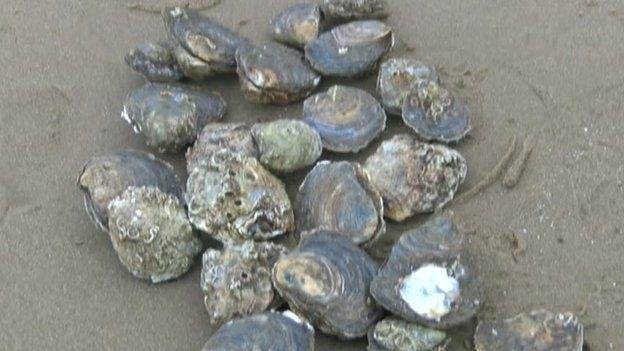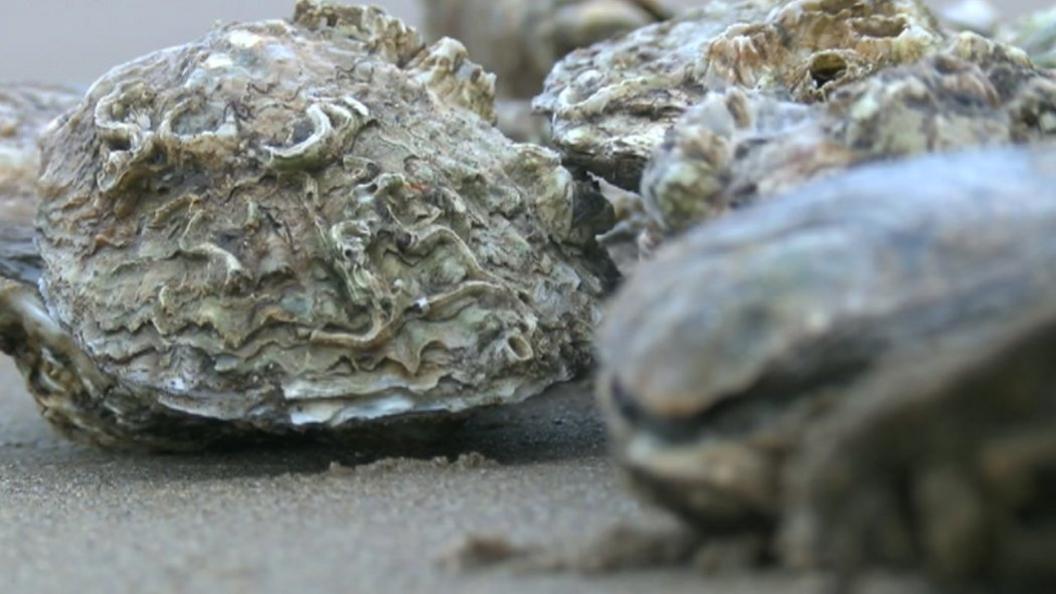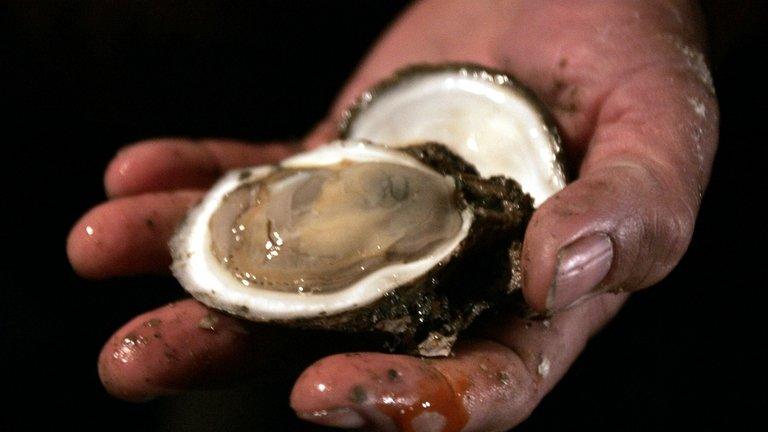Swansea Bay oysters make a return
- Published
Commercial oyster fishing could now become a very real prospect off the Swansea coast
It was a gamble and the odds were stacked against success.
Last year, scientists in Swansea released 40,000 oysters into a stretch of sea off Mumbles.
Commercial oyster fishing, once the bedrock of the coastal economy there, had died out in the 1920s.
Experts had long believed the oysters could no longer flourish there because of pollution and climate change but twelve months on and they are flourishing.
Not only did the oysters survive the harsh winter, they also grew in size and, crucially, managed to spawn.
The findings suggest that commercial oyster fishing could become a very real prospect off the Swansea coast in as little as five years.
'Repopulate the bay'
Marine biologist Dr Andy Woolmer, who led the project, admits it was a long shot.
"The marine environment is a really dynamic place," he said.
"Last winter was probably the worst for 50 years. We didn't truly know if the oysters would survive. It really was a test.
"But they did survive the winter, they've grown really well and they've started to reproduce.
"Going forward, it means that the oysters we've put in represent a brood stock that could repopulate the bay.
"It shows the water quality has improved and the area has great potential for another wild fishery."

The results of the project have been welcomed by organisers of the Mumbles Oyster and Seafood Festival, which is being staged this weekend.
The event, now in its third year, attracts around 8,000 visitors.
But the oysters on offer, some 3,000 in total, have all been imported from England.
Festival organiser Paul Whittaker says it is important for the area to offer locally sourced oysters in the future.
"If we could farm the oysters in Swansea Bay it would support local businesses and local industries," he said.
"It would also help us develop our past heritage, to increase the footfall of the area as a tourist destination."
'Renowned delicacy'
The tradition of oyster fishing in Swansea can be traced back to Roman times, but its hey day came in the 19th Century.
At that time the industry employed up to 600 men and Mumbles oysters were being exported to London and northern Europe where they became a renowned delicacy.
At its peak in 1871, 18 million oysters were brought ashore by Mumbles fishermen.
But by the 1920s the industry had waned.
Over-fishing, pollution and disease had taken their toll on the native oyster population and it never fully recovered.
Oysters in beer
Now that local oysters are thriving again, it is hoped that some old customs could be revived.
Mumbles brewer Rob Turner is one of the few in the UK to use real oysters in his beer.
Up until now he has been using shellfish native to the Pacific coast, but he wants to see a return to the good old days.
"100 years ago, eating local oysters with locally produced stout would have been a tradition," he said.
"It was the coastal version of the ploughman's lunch. A century later, I would love to be a part of enabling that to happen again.
"This time, with local oysters in my beer!"
- Published17 October 2014

- Published21 January 2014

- Published10 September 2013

- Published10 September 2013
